Confined Space Classification & Training
When deciding what training is required for confined space entry it is usual to consider the nature of the space and the hazards that will be faced. Confined spaces can be classified following a risk assessment and used to determine the level of expertise that will be required and therefore the training requirements.
The Confined Space regulations define a confined space as:
Any place, including any chamber, tank, vat, silo, pit, trench, pipe, sewer, flue, well or other similar space in which, by virtue of its enclosed nature, there arises a reasonably foreseeable specified risk.
Under these regulations a 'confined space' must have both of the following defining features:
- It must be a space which is substantially (though not always entirely) enclosed
and - One or more of the specified risks must be present or reasonably foreseeable
There are five specified risks detailed in the Confined Space Regulations:
- Serious injury to any person at work arising from a fire or explosion.
- The loss of consciousness of any person at work arising from an increase in body temperature.
- The loss of consciousness or asphyxiation of any person at work arising from gas, fume, vapour or the lack of oxygen.
- The drowning of any person at work arising from an increase in the level of a liquid.
- The asphyxiation of any person at work arising from a free flowing solid or the inability to reach a respirable environment due to entrapment by a free flowing solid.
The two most common classification systems in use are shown below.
City & Guilds 6160 Scheme
City & Guilds 6160 Competency Assessment Scheme takes a risk based approach to classifying confined spaces.
Low Risk
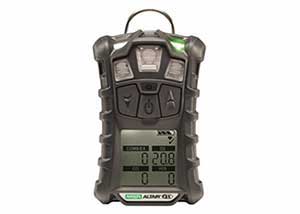
A low risk confined space exists where there is easy entry/exit, natural ventilation and no likely risk of flooding. These entries may be made by a single entrant and may involve lone working, requiring the application of appropriate procedures.
They do not require the use of escape breathing apparatus, either because the risk of a hazardous atmosphere is very low, or the time taken to get out of the space would be less than the time taken to don an escape set.
Course Details:
6160-01 - Low Risk Confined Spaces
Medium Risk
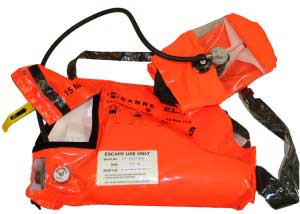
A medium risk confined space exists where there are access issues, a realistic expectation of encountering a specified risk or possible introduction of specified risks during the work activity.
Escape breathing apparatus must be used because the risk of a hazardous atmosphere is significant or the time taken to evacuate increases risk to entrants, e.g. distance travelled, where there is more than one entrant or where they are working away from the point of entry.
There will always be one or more people positioned outside the space to control the entry and deal with emergencies.
Course Details:
6160-02 - Medium Risk Confined Spaces
6160-05 - Supervising Teams Undertaking Work in Confined Spaces
6160-09 - Entrant and Entry Controller for Medium Risk Confined Spaces
High Risk
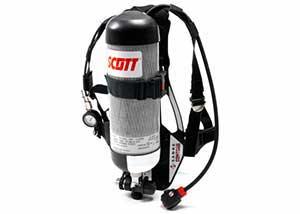
A high risk confined space exists where there is a specified hazard that cannot be controlled or eliminated. There may or may not be access issues and the work must be carried out in the presence of this specified risk.
Entries are generally made using full working breathing apparatus because there is a known hazardous atmosphere or because the risks of a hazardous atmosphere occurring are significant. This may be due to intrinsic hazards within the space or introduced or task hazards.
High risk entries require the presence of personnel who have designated responsibilities for dealing with emergencies.
Course Details:
6160-03 - High Risk Confined Spaces
6160-04 - Control Entry and Arrangements for High Risk Confined Spaces
6160-05 - Supervising Teams Undertaking Work in Confined Spaces
UK Water Classifications
Water UK in their Occasional Guidance Note "The Classification and Management of Confined Space Entries" defines confined space entries under five categories, NC1 to NCX.
NC1
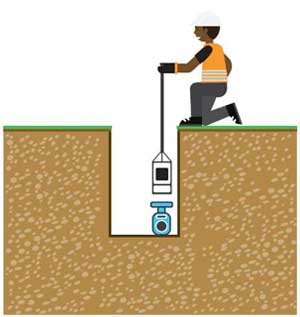
Low risk shallow entry with adequate natural or mechanical ventilation, where access is simple and unobstructed and there is no likely risk of flooding e.g. meter pits, valve chambers, booster-pumping stations, PRV chambers.
Typical equipment required for NC1 confined space entry:
- Personal protective clothing: overalls, waterproofs and gloves etc.
- Portable gas monitor capable of detecting low oxygen, explosive and appropriate toxic atmospheres
- Explosion protected lighting if required
- Mechanical ventilation if required
Course Details:
6160-01 - Working in Low Risk Confined Spaces
NC2
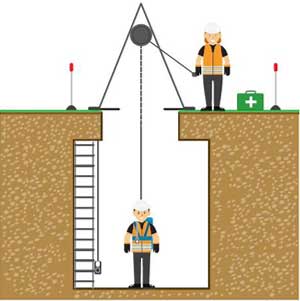
Vertical direct unobstructed access with continuous attachment to a man riding hoist or similar mechanical rescue device.
Typical equipment required for NC2 confined space entry:
- Personal protective clothing: overalls, waterproofs and gloves etc.
- Portable gas monitor capable of detecting low oxygen, explosive and appropriate toxic atmospheres
- Hand line for lowering tools etc.
- Mechanical fall arrest retrieve block if step irons or ladders are used, if not a full man riding winch. For NC2 the operative must not disconnect from the winch line.
- Appropriate full body harness
- Escape breathing apparatus
- Means of calling for emergency services
- Explosion protected lighting if required
- Mechanical ventilation if required
Course Details:
6160-02 - Working in Medium Risk Confined Spaces
6160-04 - Control Entry and Arrangements for High Risk Confined Spaces
6160-05 - Supervising Teams Undertaking Work in Confined Spaces
6160-09 - Entrant and Entry Controller for Medium Risk Confined Spaces
NC3
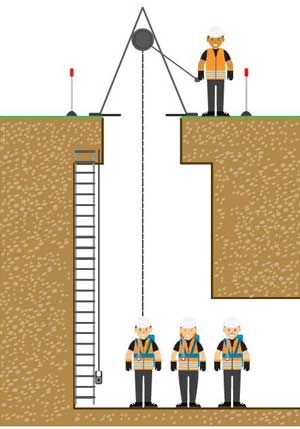
When it is not possible to have persons permanently attached to a safety line. Usually it will be a team entry which moves away from the entry point e.g. Man entry sewers, utility service subway tunnels, aqueducts and complex wet wells. Working without an attached rescue line and includes working away from the point of entry.
Typical equipment required for NC3 confined space entry:
- Personal protective clothing: overalls, waterproofs and gloves etc.
- Portable gas monitor capable of detecting low oxygen, explosive and appropriate toxic atmospheres
- Hand line for lowering tools etc.
- Mechanical full man riding winch. For NC3 the operative can disconnect from the winch line and there can be multiple entrants.
- Appropriate full body harness
- Escape breathing apparatus for all who enter
- Means of calling for emergency services
- Means of communication with team members
- Explosion protected lighting if required
- Mechanical ventilation if required
- Where disconnection is made a thorough risk assessment should be completed and this may result in an emergency rescue team being required. If a team is required they must hold the apprpriate rescue accreditation.
Course Details:
6160-02 - Working in Medium Risk Confined Spaces
6160-04 - Control Entry and Arrangements for High Risk Confined Spaces
6160-05 - Supervising Teams Undertaking Work in Confined Spaces
6160-09 - Entrant and Entry Controller for Medium Risk Confined Spaces
NC4

Non standard entries involving complex operations which introduce additional risks and require specific controls and rescue arrangements e.g. mechanical hazards, physical complexity of system introduced hazards, enhanced specific intrinsic hazards.
Typical equipment required for NC4 confined space entry::
- Personal protective clothing: overalls, waterproofs and gloves etc.
- Portable gas monitor capable of detecting low oxygen, explosive and appropriate toxic atmospheres
- Hand line for lowering tools etc.
- Mechanical full man riding winch.
- Appropriate full body harness
- Full breathing apparatus sets for all who enter (a minimum of 2 personnel to be catered for)
- Means of calling for emergency services
- Means of communication with team members
- Explosion protected lighting if required
- Mechanical ventilation if required this may need to explosion protected
- Because this entry involves known increased risks and often involves entry wearing breathing apparatus a rescue team must be available in the event of an emergency. This team must hold the apprpriate rescue accreditation.
Course Details:
6160-03 - Working in High Risk Confined Spaces
6160-04 - Control Entry and Arrangements for High Risk Confined Spaces
6160-05 - Supervising Teams Undertaking Work in Confined Spaces
NCX
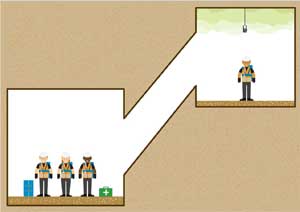
It should be remembered that not all confined spaces are vertical entry spaces. Some are horizontal entry (e.g. rooms or spaces with gas storage or combustion plant), others have vertical upward entry (e.g. roof spaces where methane or hydrogen could accumulate). Specific atmospheric analysis, access arrangements and rescue plans must be devised for each such space encountered.
Emergency Rescue & Recovery

Self Rescue
Under normal operating conditions every person working in a confined space should be capable of removing themselves from the hazardous area without assistance. If a person in the confined space becomes incapacitated, the other members of the work team should be able to assist them or sustain them in-situ pending arrival of an "Assisted Rescue" Team. This assumes a confined space "specified risk" is not present.
Should a specified hazard be present the first priority is for each individual capable of doing so to affect an expedient exit from the confined space and for the planned assisted rescue provision to be called in to assist those unable to self rescue.
Assisted Rescue
The risk assessment may identify that it is appropriate to make arrangements for Assisted Rescue in the event that a person in a confined space may become incapacitated. Assisted Rescue means a dedicated team, appropriate to the work and location, whose only job is to be available to affect a rescue in such an emergency.
These dedicated teams may be provided by in-house teams, specialist contractors or the emergency services by prior arrangement. Risk assessments must also take into consideration procedures for dealing with emergencies, even if Assisted Rescue Teams have been provided. This should include the distance the emergency services may have to travel, access to the work area, arrangements for meeting and guiding the emergency services, provision of information to the emergency services on the type of hazards, processes or chemicals that may be present, any additional hazard and any physical constraints of the confined space.
Please be aware that emergency services may deem your rescue would place their team at an unacceptable risk and refuse to commit. This is why a site specific team who already understand the layout, risk and hazards are always the best solution.
The Assisted Rescue Team must have the appropriate training for emergency rescue and casualty handling and in the appropriate use of rescue and resuscitation equipment.
Course Details:
6160-07 - Direct Emergency Rescue and Recovery of Casualties
6160-08 - Working as a Member of a Rescue and Recovery Team in Confined Spaces
